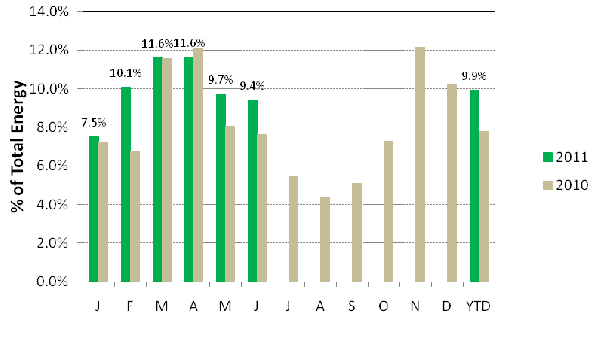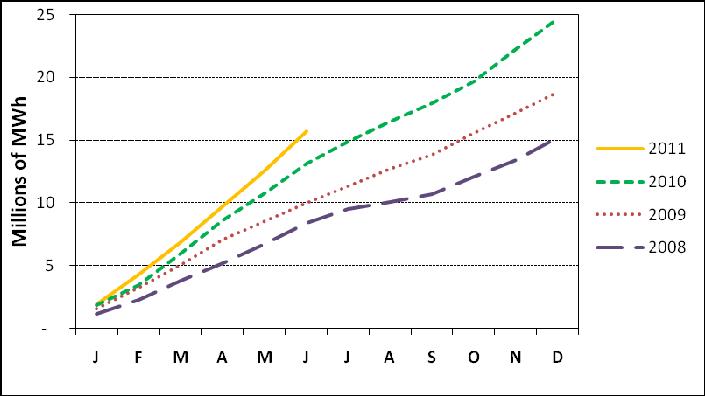 Today Austin’s temps will soar back into the 100’s for our 69th day this year of over 100 degrees. This will break a record that has stood since 1925 for the most days over 100 degrees, as we begin another round of heat advisories lasting through the weekend of 100+ degree weather. Since we’re going to not just be breaking the record, but adding several more days onto it (to a total of at least 73 or 74- assuming this is the last hot pattern we have in the next month), we may want to ask ourselves what is going on?
Today Austin’s temps will soar back into the 100’s for our 69th day this year of over 100 degrees. This will break a record that has stood since 1925 for the most days over 100 degrees, as we begin another round of heat advisories lasting through the weekend of 100+ degree weather. Since we’re going to not just be breaking the record, but adding several more days onto it (to a total of at least 73 or 74- assuming this is the last hot pattern we have in the next month), we may want to ask ourselves what is going on?
Well, we are faced with a La Nina weather pattern, bringing hot, dry weather to the Lonestar state. La Ninas have happened before and they’ll happen again- as evidence by the 86 year old record og 68 days of 100+ heat. For it to be hot in Texas in the summer is normal, but it’s not normal for it to be this hot for this many days.
Which brings us to climate change. Scientists theorizing about climate change decades ago predicted exactly what we are seeing now: slight upticks in temperature giving us more slightly hotter days. So, a day that would normally be 98 or 99 is now 101 or 102 due to the radiative forcings of the greenhouse gases in our atmosphere. Or, like this informative video from Futurama explains it:
[youtube=http://www.youtube.com/watch?v=2taViFH_6_Y&feature=fvwp&NR=1]
Things are even getting so bad that they’re delaying Texas football games by an hour to let the temperatures cool off. So, as unprecedented as these individual points are, they don’t necessarilly individually indicate a pattern of warming. However, when you consider that in 2009 we were also in danger of breaking the 1925 record, and 2008 was also an unseasonably hot year, the fact that climate is getting hotter is in no doubt.
 Meanwhile, there are a lot of folks wasting their time debating the science of climate change. Our Texas governor, Rick Perry, himself a well-known source of greenhouse gases, recently told people in New Hampshire that “I think there are a substantial number of scientists who have manipulated data so that they will have dollars rolling into their projects. I think we’re seeing it almost weekly or even daily, scientists who are coming forward and questioning the original idea that man-made global warming is what is causing the climate to change.” Call me crazy, but Perry sounds. . . well, crazy. Politifact looked into it and called his statement False. That’s putting it nicely. Perry was probably obliquely referring to the non-scandal known as Climategate, the only real scandal of which was that several scientists had their private emails hacked and published. Despite looking for problems with the scientists’ actual work reviews by several major agencies have cleared the scientists, including yet another one, today, from the National Science Foundation.
Meanwhile, there are a lot of folks wasting their time debating the science of climate change. Our Texas governor, Rick Perry, himself a well-known source of greenhouse gases, recently told people in New Hampshire that “I think there are a substantial number of scientists who have manipulated data so that they will have dollars rolling into their projects. I think we’re seeing it almost weekly or even daily, scientists who are coming forward and questioning the original idea that man-made global warming is what is causing the climate to change.” Call me crazy, but Perry sounds. . . well, crazy. Politifact looked into it and called his statement False. That’s putting it nicely. Perry was probably obliquely referring to the non-scandal known as Climategate, the only real scandal of which was that several scientists had their private emails hacked and published. Despite looking for problems with the scientists’ actual work reviews by several major agencies have cleared the scientists, including yet another one, today, from the National Science Foundation.
So, it’s hot. Those of us with functioning brains can understand why it’s hot, and getting hotter. So what do we do about it?
The first and most obvious step is energy efficiency. If we’re going to be demanding more cooling, rather than pumping out more pollution, let’s use that energy as efficiently as we can by sealing leaks in our homes, offices, etc. Let’s use more efficient lighting and appliances, all of which help keep our energy bills low. Let’s look at harnessing the power of that big hot Texas sun to do more than just melt our snowcones. Let’s look at oru energy policy holistically so that we can come up with cheaper, cleaner, cooler solutions to our energy needs.














